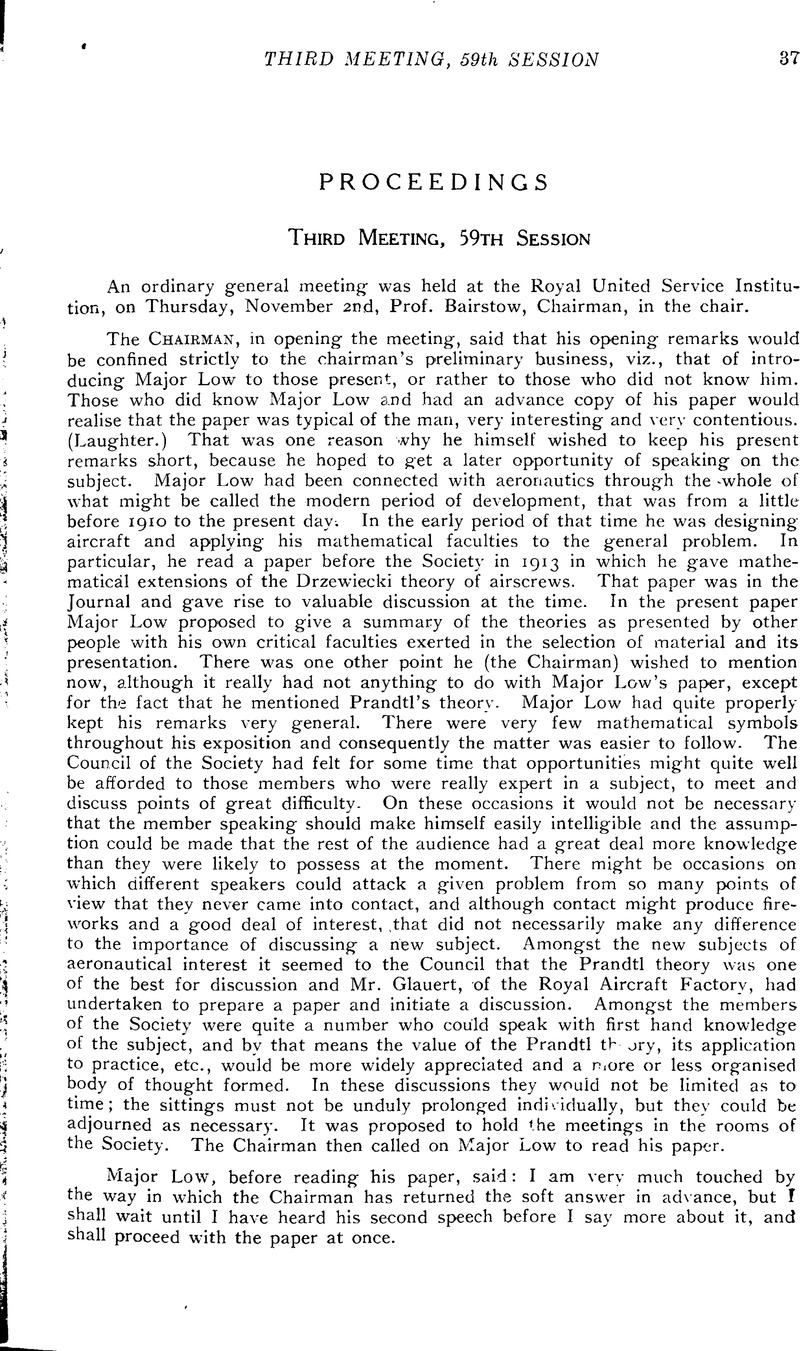Article contents
Review of Airscrew Theories
Published online by Cambridge University Press: 24 August 2017
Abstract

- Type
- Proceedings
- Information
- Copyright
- Copyright © Royal Aeronautical Society 1923
References
Note on page38* The French word régime is rendered by the word “state,” qualified where necessary for clearness by appropriate adjectives.
Note on page39* For the nature of the actuator and for accurately drawn diagrams of the flow, see H. Kimmel, Z.f.F.u.M., 24th February, 1912, p. 53.
Note on page40* It is of interest to refer to the it.A.E. experiments on flow about an airscrew whose tip speed exceeds that of sound. In this state the axial columnar outflow disappears and radial outflow is set up.
Note on page41* The following dates are interesting :—
Low, Drzewiecki's Theory, Journal, October, 1913.
Bramwell, Propellers, Journal, April, 1914.
Bramwell, A.C.A., R. and M. 82, March, 1913 ( ! ).
Note on page45* We have exp. (θ)=l + θ+θ2+2+ . . and by choosing θ small we get the ratio of the radii approximately (1+θ) while the sides are in the ratios 1 : 1+θ/2 : l + θ/2 : 1 + θ.
Note on page65* Note.—It is necessary to distinguish between the expressions before, at, and behind the disc.
† Note.—In the sense that the trigonometrical functions are degenerate cases of elliptical functions.
Note on page66* Nachrichten v. d. K. (Gesell, d. Wissenehaften zu Goettingen, Math-Phys. Kl., 1919, Heft 2, p. 193, “Schraubenoropeller mit geringsten Energieverluste.”
- 1
- Cited by




